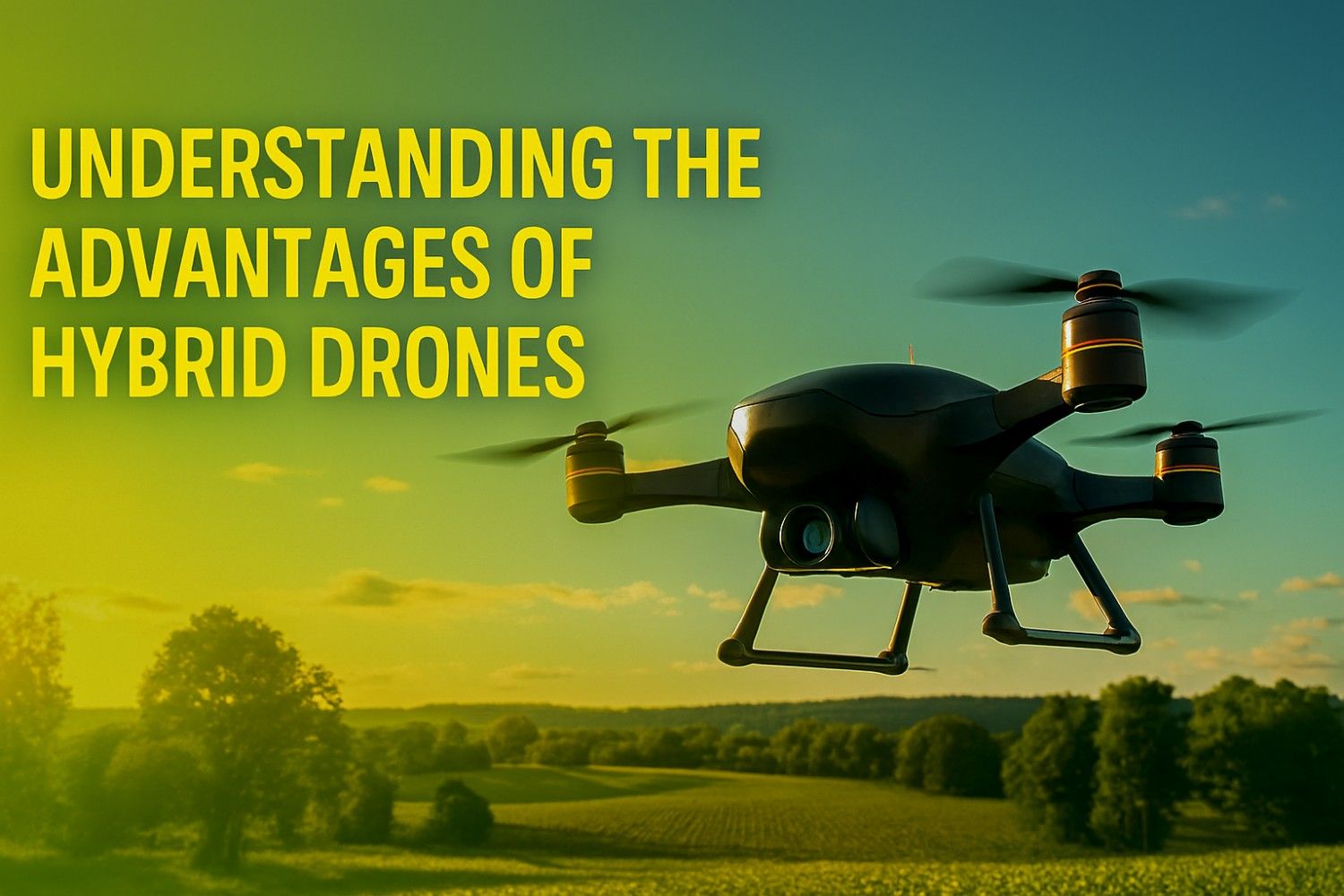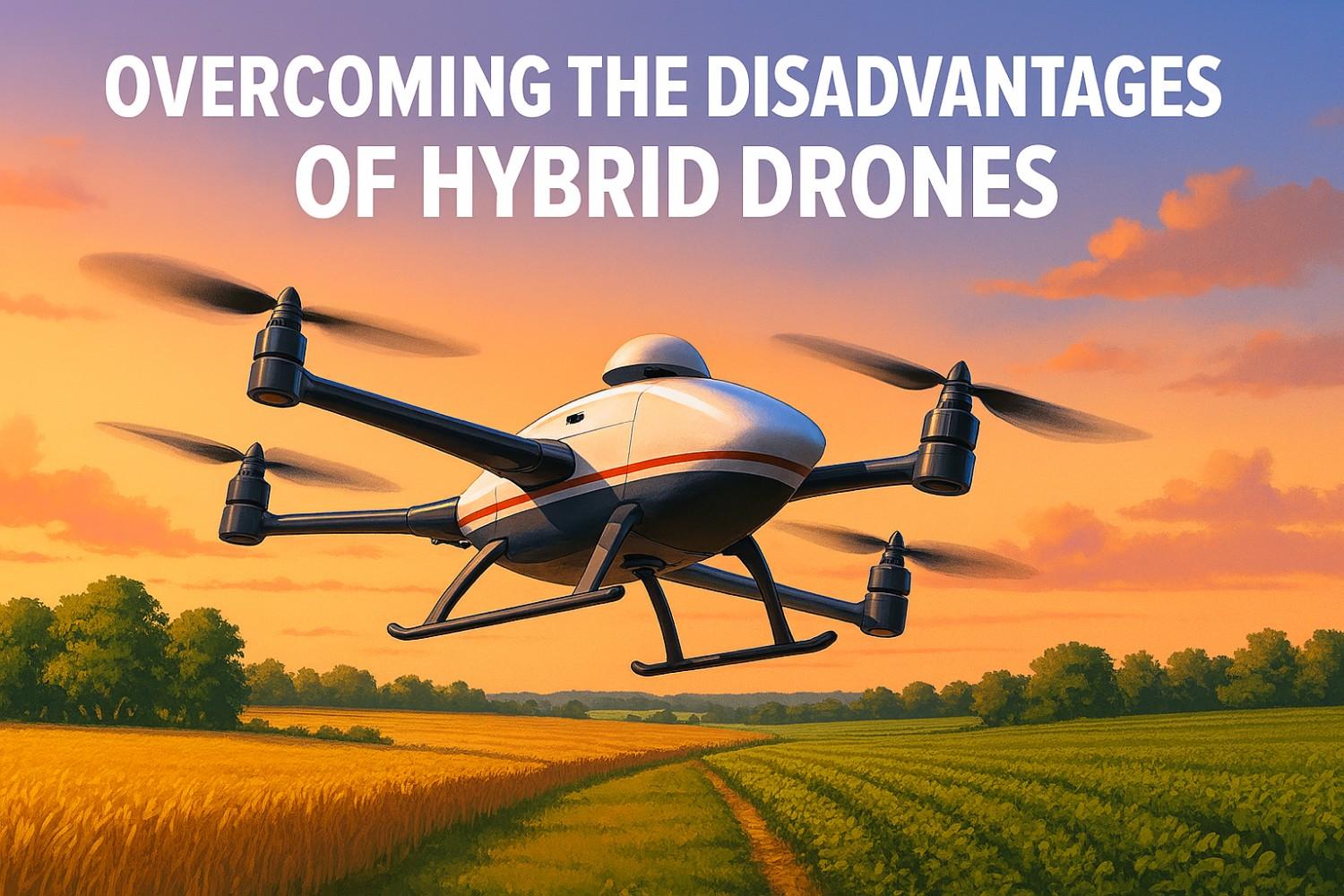The Rise of Hybrid Drones: Transforming Mobility in the Modern World
Hybrid drones are intended for vertical takeoff and landing capabilities, significantly reducing the risk of damage to the airframe throughout la

Hybrid drones are a combination of traditional electric propulsion with an onboard fuel-powered generator. It bridges the gap between endurance and efficiency. They can remain airborne for hours. For mapping, inspection, security, surveillance, or cinema, this can unlock new possibilities for operations that were once limited by battery life. However, hybrid drones have several advantages and disadvantages. Their extended flight times and operational flexibility are unmatched. Understanding both sides of the coin is important for making decisions about the adoption of the same.

Hybrid drones have recently gained popularity as industries strive for longer flight times and more robust aerial platforms. These are some advantages of hybrid drones.
Extended Flight Endurance
Hybrid drones have remarkable endurance. While battery-powered drones are limited to under an hour of flight, these can be airborne for several hours. This prolonged range enables operators to complete extensive mapping missions and continuous surveillance operations without the need for constant battery swapping. These can also be used for inspection or for security and surveillance purposes.
Augmented Operational Efficiency
Longer flight times translate into greater operational competence. Hybrid drones reduce downtime caused by frequent battery changes and charging cycles, allowing crews to cover more ground in a single mission. This competence can result in fewer takeoffs and landings, which not only saves time but also reduces wear on the aircraft.
Higher Payload Capacity
Due to the additional power available from their fuel-based systems, hybrid drones can carry heavier payloads than electric models. This makes them perfect for mounting cutting-edge sensors, LiDAR systems, advanced cameras or multi-sensor setups that demand considerable energy and lift. For transport or power-demanding capabilities required for extended missions, the hybrid ones offer endurance and ability.
Reduced Downtime in the Field
Hybrid drones minimize the requirement for extensive charging infrastructure in remote locations. Since their fuel systems can be refilled rapidly, operators can resume missions with minimal interruptions. This makes them appropriate for operations in isolated environments. Refuelling can be done quickly, allowing missions to continue without any kind of interruption.
Enhanced Reliability and Redundancy
Hybrid drones are designed with redundancy in mind, featuring dual power systems, backup batteries, and fail-safe propulsion systems. During an engine or generator malfunction, the electric motors can operate long enough to execute a safe landing. This added safety makes hybrid drones attractive for emergency response, defense or infrastructure monitoring.

Hybrid drones also come with several challenges that operators must consider before deployment. The added difficulty of combining two power systems, electric and fuel-based means that hybrid drones behave differently from conventional electric drones. Here are some disadvantages of using hybrid drones and why they matter for professional users.
Increased Complexity
Hybrid drones require integration between the combustion engine, generator and electric powertrain. This means more moving parts, more sensors and more potential points of failure. Unlike electric drones, which are relatively simple in design, hybrids require careful balancing of fuel flow, cooling and electrical output to guarantee smooth operation. This can make them sensitive to improper handling or environmental stress, needing a higher level of technical know-how to maintain.
Higher Degree of Maintenance
More frequent maintenance needs to be done in case of hybrid drones as opposed to all-electric drones. There is a need for regular inspections of the engine and generator, requiring cleaning and replacement of filters and spark plugs. Furthermore, their cooling systems and fuel management components require inspection for leaks or degradation. For large organizations, additional upkeep can increase the time and cost of the ongoing operations.
More Noise and Weight
The inclusion of a combustion engine and fuel tank inevitably increases the drone's weight. This can decrease manoeuvrability and limit the payload. Also, the presence of an engine introduces noise. This can be problematic in film production, wildlife monitoring or urban operations, where silent operation is preferred.
Fuel Dependency and Environmental Impact
Hybrid drones rely partly on fossil fuels, generating emissions and require refuelling logistics. Organizations looking to reduce their environmental footprint face a significant challenge. Though hybrids are more fuel-efficient than traditional drones, their carbon output is higher than that of battery-electric drones. This also adds complexity to operations in strict environments.
Initial Costs are Considerably Higher
The cutting-edge engineering required to integrate hybrid technology often results in a higher price as opposed to electric drones. Apart from purchase cost, there are additional expenses for specialized maintenance tools, training and replacement parts. The initial financial barrier may be too high for smaller organizations or entry-level operators.

It is important to understand the technology’s demands and prepare accordingly. For professionals wanting precision, reliability and endurance, a proactive strategy can transform these disadvantages into manageable trade-offs.
Proper training helps to overcome the complexity and address maintenance concerns. Operators with comprehensive technical instruction on their hybrid drones can better handle routine maintenance and identify minor issues before they become a big headache. Comprehensive training programs covering hybrid power management, along with emergency procedures, ensure users can optimize both safety and uptime, which are offered by certain manufacturers.
Maintenance challenges can also be minimized through structured service plans and periodic factory-certified inspections. Regular checks of the powertrain, fuel system and cooling components can extend the drone’s lifecycle and preserve its performance under demanding conditions.
Finally, the higher initial costs can be offset by calculating the total cost of ownership. When used efficiently, hybrid drones often complete missions that require multiple electric flights, resulting in savings in time, manpower and logistics.

Now that you know all about the advantages and disadvantages of hybrid-powered drones, it will be easy for you to decide on the selection of some. Whether you want to purchase a drone or learn how to pilot it efficiently, Flapone Aviation is a one-stop solution. The experienced instructors will make sure that you learn from the very scratch, the art of piloting a drone and become a licensed drone pilot and also procure the most suitable drone for your requirements.
Not sure which drone fits your needs? Our experts can guide you to the perfect UAV for your mission.